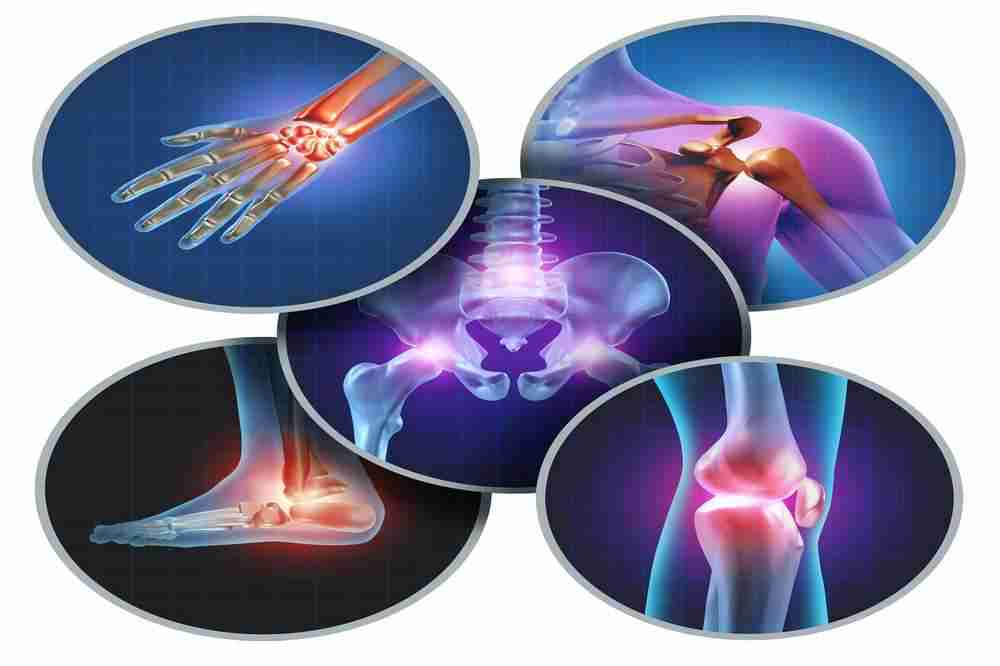Osteoarthritis Signs and Symptoms

As stated earlier, osteoarthritis is a chronic disease. There is a progressive degradation of articular cartilage, which also means that the symptoms are episodic in nature. The following complaints are commonly received even after a stressful workout. However, if you meet the certain criteria of risk factors and causes, and the complaints keep recurring, or become worse with time, it is better to consult an orthopedic doctor and get a proper diagnosis.
Joint pain
A number of other diseases of joints can cause pain. But the pain of osteoarthritis can be distinguished under certain headings. In the initial phase of the disease, the joint pain sets in when the joint is overused. For instance, a high-strain activity like running or climbing will cause pain in the knee or hip joint. This pain gets resolved by providing rest to the joint. At this stage, the joints are more painful at the end of the day, exhausted by the entire workload during the day. But as the disease progresses, the pain starts occurring even at rest, or episodes of pain may even occur at night.
In character, the pain is described in varied ways; for some patients a stabbing pain, others may complain of a dull aching type of pain.
There are multiple theories to answer the question as to what causes this pain. It was believed that the increased friction between the bones and decreased lubrication may lead to pain. But now, the more favorable theory involves the rich supply of sensory nerve endings at the joints. There is a finding of an increased number of pain receptors in the joint. These receptors have increased sensitivity to the inflammatory cytokines released in the disease. With disease progression, the number of receptors multiplies, causing the pain to worsen over time and even at rest.
Stiffness in joints
Another hallmark symptom of osteoarthritis is stiffness in the affected joint. The stiffening at the joint leads to restricted motility and even that is accomplished by overcoming increased resistance.
According to a study (1), joint stiffness is the direct effect of synovial fibrosis in osteoarthritis. The whole joint capsule, involving the cartilage lining the bones, the underlying bone tissue, and the enclosed fluid lined by a fluid secreting synovial membrane is affected by osteoarthritis. It was found that with the progression of the disease, the initial inflammation of synovia is replaced by the fibrosis. Fibrosis is also a normal physiological process of wound healing. However, in osteoarthritis, fibrosis is driven by certain factors, which result in thickening of the synovial sheath due to deposition of extra collagen.
All in all, the stiffness is a result of progression of disease and a sign of worsening of osteoarthritis. The joint seems to be ‘locked’, particularly after periods of inactivity. This is why it is often termed as ‘morning stiffness’. The number of movements across it like extension and flexion become difficult with time and are often accompanied with pain.
Tenderness and swelling
Pain in the joint can be so marked that it can account for tenderness, that is, painful to touch. The tenderness and swelling at the joint can be the signs of inflammation. Synovitis or the inflammation of the synovium lining the affected joint expedites the cartilage degradation. This inflammation is characterized by the presence of certain inflammatory mediators. Some of these mediators can cause synovial effusion which can be appreciated on an MRI of the affected joint. The tissues surrounding the joint may get swollen as a result of the consequent fluid accumulation. Most commonly, the weight-bearing joints, like the hip , are more often complicated by synovitis and undergo swelling. However, apart from these local inflammatory signs and symptoms, no general or systemic symptoms like fever and fatigue are seen in osteoarthritis. The joint inflammation is also not as marked as seen in rheumatoid arthritis.
